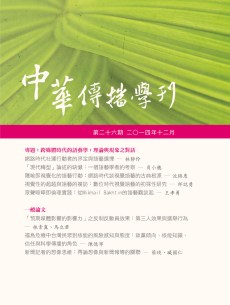 閱覽人數: 2020
閱覽人數: 2020
December
2014
No. 26
跨媒體時代的語藝學: 理論與現象之對話
Rhetoric in the Transmedia Age: A Dialogue between Theory and Phenomenon頁數:63 - 106
作者(中)
沈錦惠
作者(英)
Mary Chin-Hui Shen
關鍵詞(中)
視覺語藝、視覺化、視覺思考、媒介素養、詩性之知、隱喻
關鍵詞(英)
visual rhetorics, visualization, visual thinking, multimedia literacies, poetic wisdom, metaphors
中文摘要
視覺化是網路傳播趨勢,而始終即視覺化嘗試的隱喻,不論形諸語言或圖像影像,皆為誘發認同的語藝行動。本文視隱喻為詩性之知的代表,為銜接傳統語藝與視覺語藝的關鍵。作者先循當代與古典兩路梳理既有隱喻理論,借Lakoff & Johnson、Ricoeur、Vico 與Aristotle,突顯隱喻的常民性、經驗性與社群性對網路多媒體傳播研究的深意;接著探討視覺化對語藝學的意義,並以Arnheim 的視覺創意研究,連結語言與視覺隱喻,盼能在日益視覺化的網路環境中促進媒介素養的反思。
英文摘要
This essay addresses the recent visual turn in communication research by exploring metaphors simply and directly as a visualization technique used by rhetors to engage audiences and induce cooperation. Treated as representative of poetic wisdom in contrast to scientific knowledge, metaphors serve well to bridge the gap between verbal rhetoric and visual rhetorics. Drawing on Lakoff & Johnson, Ricœur, Vico and Aristotle, the author emphasizes the experiential and sociocultural characteristics of metaphors, which are highly relevant to our bodily existence and daily life. Then the significance of visualization in rhetorics and the role
of both visual and verbal metaphors in the process are discussed. To enhance understanding of rhetorics as perception-based, the author refers to Gestalt psychologist Rudolf Arnheim for his rich study on visual thinking and expression creativity, thereby demonstrating that metaphors are not only at the core of communication competence but also are essential to multimedia literacies in the present network era.
of both visual and verbal metaphors in the process are discussed. To enhance understanding of rhetorics as perception-based, the author refers to Gestalt psychologist Rudolf Arnheim for his rich study on visual thinking and expression creativity, thereby demonstrating that metaphors are not only at the core of communication competence but also are essential to multimedia literacies in the present network era.